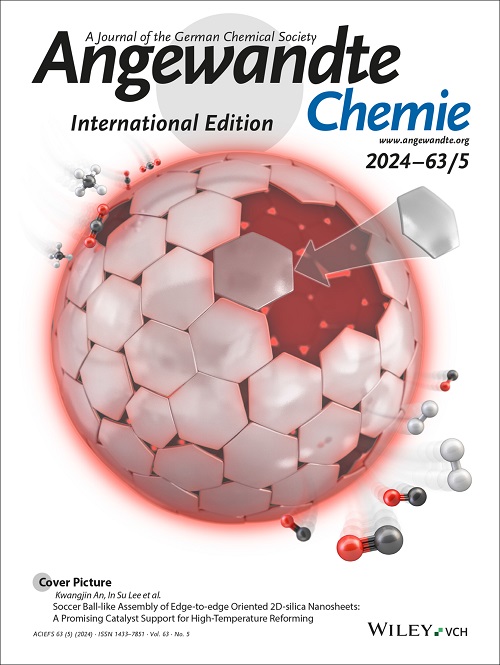Total Synthesis of (–)‐Cordycicadin D and 3,4‐trans‐Cordycicadins A and B: Entry to the 3,4‐trans‐Fused Cordycicadin Framework
IF 16.1
1区 化学
Q1 CHEMISTRY, MULTIDISCIPLINARY
引用次数: 0
Abstract
: Lost in post‐translation. Cordycicadins A–D are four C20 polyketides, all containing a g‐lactone fused to a 10‐membered lactone. The proposed biosynthetic pathway for the cordycicadins anticipates the formation of two more natural products which are unknown. We report the total synthesis of (–)‐cordycicadin D and the two anticipated natural products 3,4‐trans‐cordycicadins A and B. The targets were convergently assembled, in a biomimetic fashion, via an efficient ketene trapping‐intramolecular Michael addition sequence that delivered the requisite 3,4‐trans‐fused framework with high diastereoselectivity, enabled by the synthesis of complex dioxenones that serve as in situ ketene precursors. Recognition of the embedded polyketide symmetry enabled the use of a divergent‐convergent synthetic strategy, based on the use of two products from an early‐stage enzymatic resolution. The synthetic routes afforded (–)‐cordycicadin D in 14 steps and 3,4‐trans‐cordycicadins A and B in 13 steps (longest linear sequence). This work confirms the structure of (–)‐cordycicadin D and the observed instability of the anticipated natural product 3,4‐trans‐cordycicadin B during purification may explain why it is yet to be isolated.(-)-冬凌草苷 D 和 3,4-反式冬凌草苷 A 和 B 的全合成:进入 3,4-反式融合冬凌草苷框架
:在翻译后丢失。Cordycicadins A-D 是四种 C20 多酮化合物,均含有一个融合到 10 元内酯的 g-内酯。所提出的冬虫夏草苷的生物合成途径预计会形成另外两种未知的天然产物。我们报告了 (-)-cordycicadin D 和两种预期天然产物 3,4-反式-cordycicadins A 和 B 的全合成过程。目标物以生物仿生的方式,通过高效的酮诱捕-分子内迈克尔加成序列聚合在一起,以高非对映选择性提供了所需的 3,4-反式融合框架,并通过合成作为原位酮前体的复杂二恶烯酮得以实现。由于认识到了嵌入式多酮的对称性,因此采用了一种发散-转化合成策略,该策略的基础是使用早期酶解过程中产生的两种产物。合成路线经过 14 个步骤得到了(-)-冬凌草苷 D,经过 13 个步骤得到了 3,4-反式冬凌草苷 A 和 B(最长线性序列)。这项工作证实了(-)-冬虫夏草苷 D 的结构,而在纯化过程中观察到的预期天然产物 3,4-反式冬虫夏草苷 B 的不稳定性可能解释了为什么它尚未分离出来。
本文章由计算机程序翻译,如有差异,请以英文原文为准。
求助全文
约1分钟内获得全文
求助全文
来源期刊
CiteScore
26.60
自引率
6.60%
发文量
3549
审稿时长
1.5 months
期刊介绍:
Angewandte Chemie, a journal of the German Chemical Society (GDCh), maintains a leading position among scholarly journals in general chemistry with an impressive Impact Factor of 16.6 (2022 Journal Citation Reports, Clarivate, 2023). Published weekly in a reader-friendly format, it features new articles almost every day. Established in 1887, Angewandte Chemie is a prominent chemistry journal, offering a dynamic blend of Review-type articles, Highlights, Communications, and Research Articles on a weekly basis, making it unique in the field.

 求助内容:
求助内容: 应助结果提醒方式:
应助结果提醒方式:


